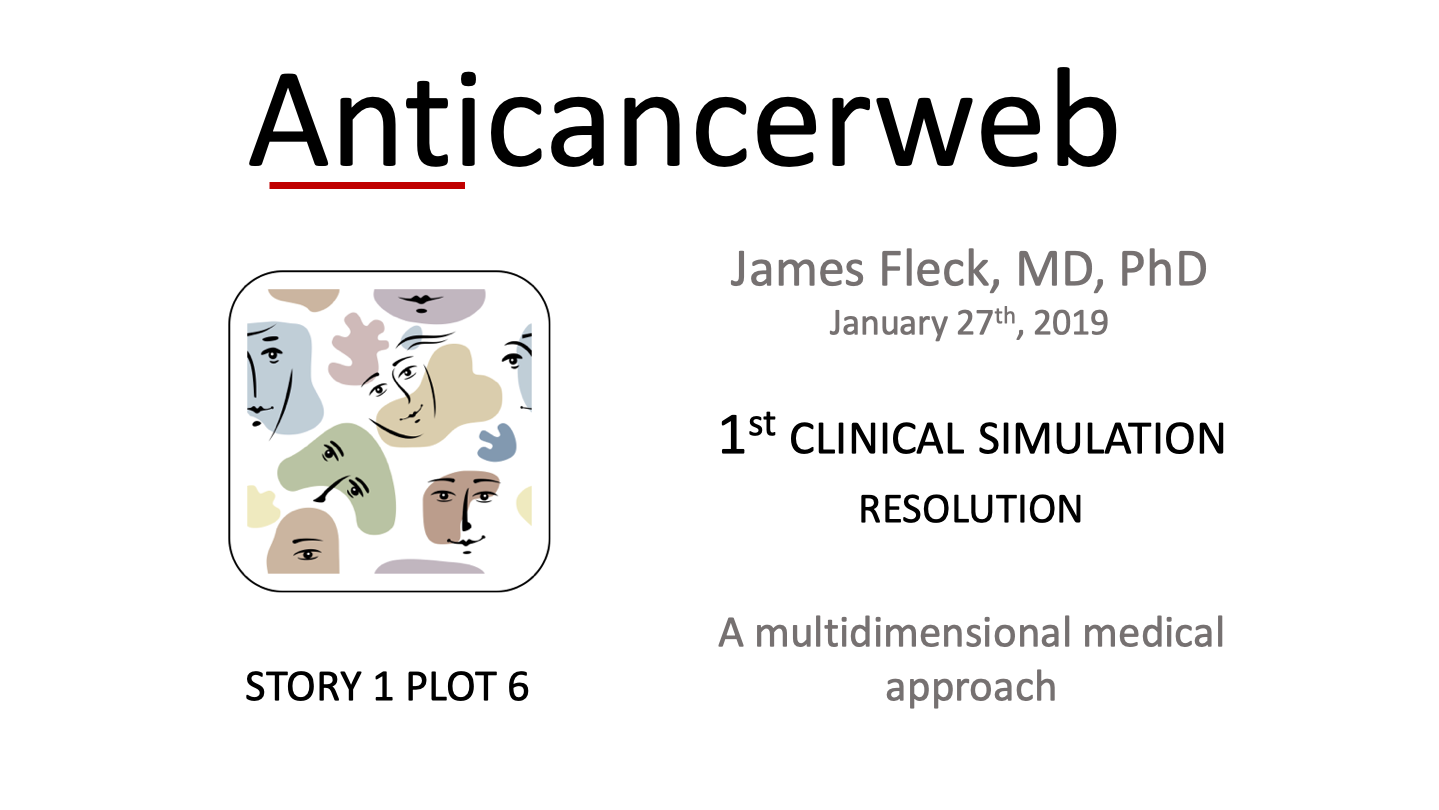
The Internal Enemy | Resolution
A multidimensional medical approaching
(Fictional narrative by the doctor)
James Fleck, MD, PhD & João A de Andrade, MD
Anticancerweb 27 (01), 2019
Ruth had an inquisitive attitude from her very first visit. The initial unfocused sense of despair gradually morphed into action directed against the disease. Her breast cancer diagnosis was made during a life crisis caused by a recent and painful divorce. Ruth was still struggling with emotional and financial losses, so it was not a surprise that she felt overwhelmed by the diagnosis. The 35-year-old single mother of two young daughters was faced with her own mortality. Nevertheless, she managed to remain objective and directed her energy to learning about the disease so she would be better prepared to fight it. Ruth’s approach had a pedagogical bias, which was natural for a high school teacher. She challenged the doctor asking for education about the oncogenesis process and the biological behavior of cancer in a language that would be accessible for a patient without a broad scientific background. Ruth became acquainted with the disease and began to call cancer her “internal enemy”. This approach strengthened her coping skills and allowed her to remain focused as she was confronted by the multiple faces of her internal enemy. By establishing a strong collaboration with her doctor, she was well prepared to engage in the necessary shared-decision making process.
Ruth learned that both the diagnosis process and the treatment strategies for cancer had had major technological advances in recent years. A new molecular classification allows for a more personalized treatment plan, improving specificity, safety, and cost-effectiveness. Similarly, her physician had an empathetic behavior, always carefully addressing her concerns while paying attention to her emotional cues. The open exchange of information strengthened the patient-physician collaboration and stimulated her to become a protagonist in her own recovery. The multidisciplinary and multidimensional team gave Ruth a sense of belonging and helped drive away negative feelings such as loneliness, fear, guilt and self-pity. She gradually restored her self-confidence and was able to complete her treatments while keeping up with her other professional and personal activities. The process of information sharing was always informed and calibrated by her emotional status and curiosity. Ruth came to understand Medicine as a probabilistic science and worked closely with the physician to maximize her chances of cure. Risks and benefits of each intervention were clearly explained to the patient in a well-informed, objective, and serene atmosphere.
There were two turning-points in Ruth’s emotional flow. The first was when she realized that she should fight for her recovery and for her life. Her daughters were the focus of her concerns. Being so young, Ruth knew that they were still very much in need of her love and protection. The result was a proactive and collaborative behavior. The second turning-point happened when Ruth internalized all the information she needed to be able to overcome the disease. She completed the treatment and went on to focus on addressing her own daughters’ risk of developing the disease through a well-designed genetic counseling program.
Ruth’s story illustrates that shared-decision making is a process that needs to be carefully developed. The foundations of it are empathy and respect for the patient’s need for education at their own pace. There is always a delicate line between a patient’s emotional status and their ability to take in information and act rationally. Invariably, rationality can only be achieved once the emotional gaps have been addressed.
This highly artistic, personal, and mutually fulfilling process should be mastered by all professionals and organizations directly or indirectly involved with cancer prevention, diagnosis, and treatment.
* Attention: The story 1 was published sequentially from the PLOT 1 to the PLOT 6, however it will appear backwards. So, you will always see the most recent publication. Just browse back in the numbered pages located at the bottom of the homepage and start to read story 1 from the beginning.
Story 2, the “Tower of Hanoi” is coming soon …
© Copyright 2019 Anticancerweb
James Fleck, MD, PhD: Full Professor of Clinical Oncology at the Federal University of Rio Grande do Sul, RS, Brazil 2019
Joao A. de Andrade, MD: Professor of Medicine and Chief Medical Officer, Vanderbilt Lung Institute, Vanderbilt University Medical Center, Nashville, TN – USA 2019 (Associate Editor)

Please login to write your comment.
If you do not have an account at Anticancerweb Portal, register now.